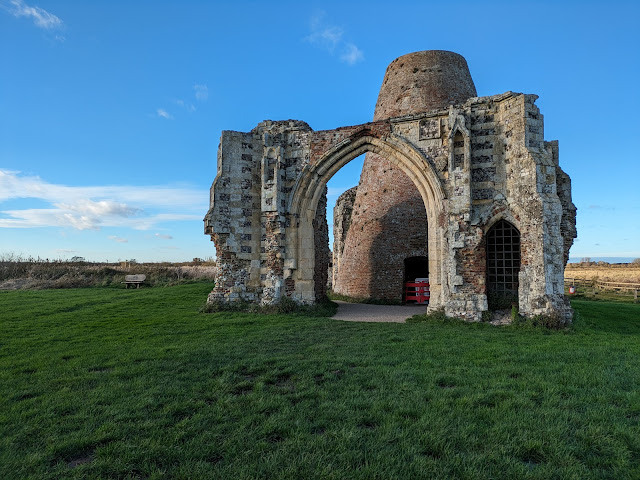Feast of St. John the Baptist
Re-badging pagan places of worship as churches, as outlined in Gregory the Great's 7th C Letter to Mellitus, made a great deal of sense in the conversion of East Anglia. To what extent modern church dedications reflect the choice of a feast days to coincide with and replace pagan festivals is a moot point.
The spandrels above the west door - a lamb and flag on one side and the eagle on the other - a and the two empty niches of St. John the Baptist, Coltishall reveal its original dual dedication.
That would have been very handy if there was a pre-existing tradition of marking midwinter (St. John the Evangelist) and midsummer (St. John the Baptist).
We cannot know, but we might guess, that the tradition of midsummer fires that continues in some parts of the U.K, was part of a wider (pre-Christian?) tradition marking all the solstices and equinoxes with fire. So one can imagine our yet to be converted Anglo-Saxon forebears having their festivals at the same times and the same place.
And they would not have been alone in this. Further down the river is Belaugh where the church dedication is to St. Peter, which is another midsummer dedication. One understanding of the name Belaugh might be another clue. Bel = Shining and leigh = a clearing. It is easy to imagine people lighting a fire on that high place above the river.
The Autumn Equinox fire tradition, re-badged as Guy Fawkes Night, is the most widely observed today. The church dedication that matches is All Saints. All Saints, Horstead is just up river.
A continuation of this fire tradition into Christian times - at Christmas and The Feast of St. John the Evangelist, in the winter, on the Feasts of the Birth of John the Baptist and St. Peter at midsummer; and at All Saints-tide, with its remembrance of the dead - could be understood as Christian Good News bringing light.
So that then and now Christians join their voices with John the Baptist's dad on the Feast of the Birth of John the Baptist, dear old Zecharia , and give thanks that "light has lighten the Gentiles." In particular the Christian people of these Broadland rivers.
Churches with dedications to St. John abound beside Broads rivers. The church founded by St. Felix at Reedham in the 7th C is dedicated to St. John the Baptist. St. Felix had chosen an abandoned Roman fort as his Broadland base signalling thereby the Church's links to Rome. Maybe this too was a dual dedication mirroring the dual dedication of the Papal Basilica of St. John, Lateran in Rome.
Romanitas, interest in all things Roman, continued to be a concern of the Church in East Anglia into Norman times as can be seen in the Romanesque architecture of the Norwich Cathedral. It can also be seen in the oldest part of Coltishall church building where reused Roman brick features.






Comments